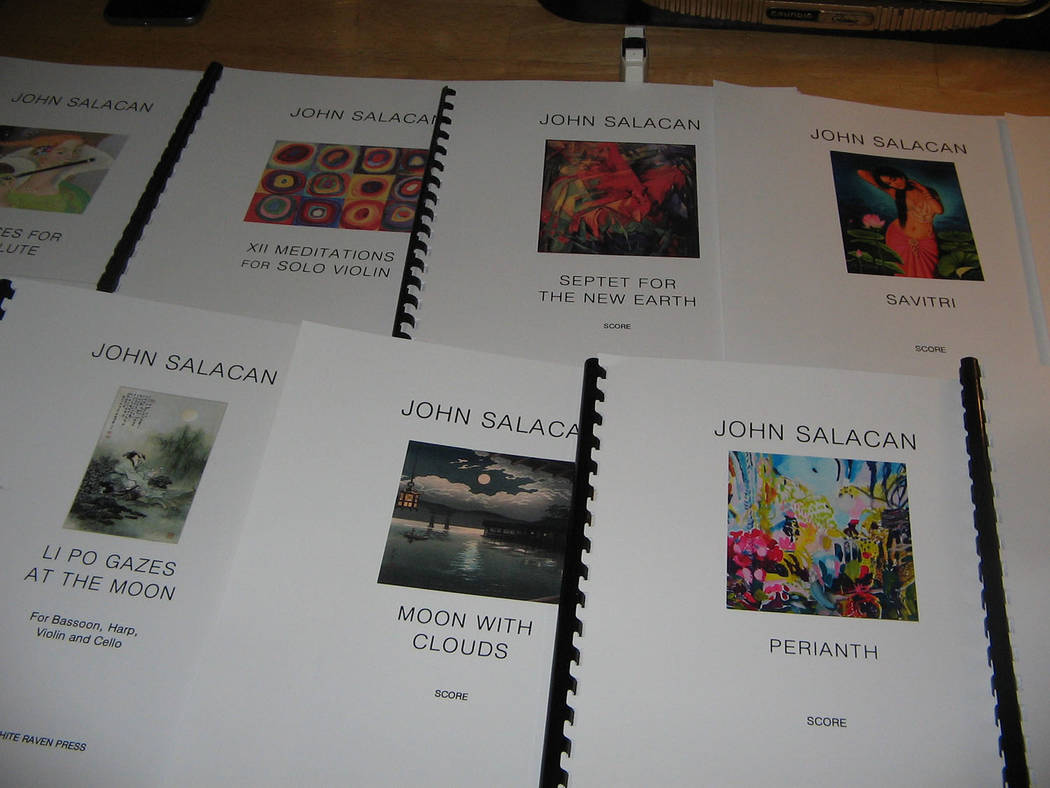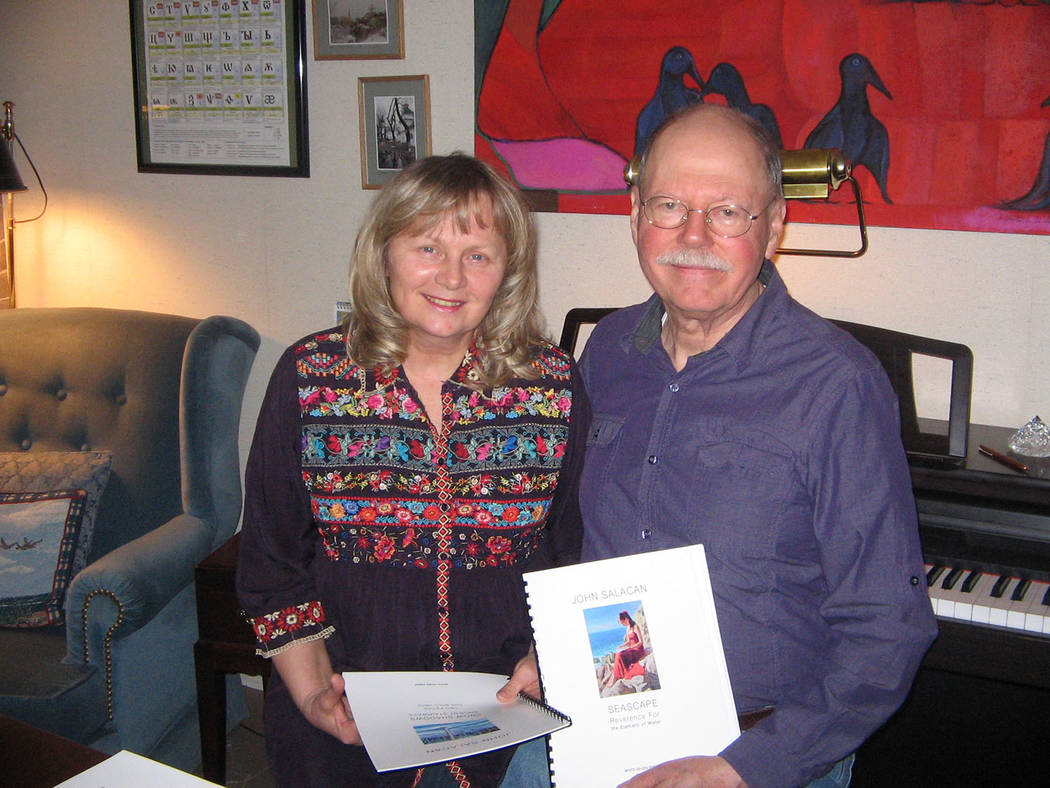Pahrump man shares the music
John Salacan is well-known around Pahrump for his work as a published poet, writer, painter, publisher and restorer of books, but many residents may not know that he is also a musician and composer.
He has written close to 150 separate pieces, some are part of collections including “Six Meditations for Flute &Piano” and “Twelve Meditations for Solo Violin.” His other notable compositions include eight symphonies, four violin concertos, five string quartets, sonatas, chamber music and orchestral pieces among a myriad of other scores.
“The Machinery of Night”, his seventh symphony, was inspired by Allen Ginsberg’s poem “Howl,” and favored by this reporter who got to hear a snippet of it.
Salacan writes music for all types of instruments: English horn, French horn, viola, piccolo, bassoon, oboe, flute, cello and many others. If anyone needs music written for a specific type of instrument, Salacan is the man.
He started playing the piano seriously in his early teens growing up in New Jersey.
“It was when I reached, maybe 13, that I discovered classical music, fell in love with it, and then asked (his parents ) if I could go back and practice the piano again,” Salacan said. “Within about 10 years, I was a very good pianist.”
EARLY START
His parents gave him piano lessons, had him studying music theory, writing and copying it, but not actually composing when he was about 6 years old.
Since he always wanted to compose, in the early 1970s, Salacan sat down and wrote some songs based on Emily Dickinson’s poems.
Overall, he estimates that he has been composing for about 40 years and credits YouTube during the last 10 for giving him exposure to modern music since he had no formal training in it.
Salacan said we’re now in a period of post-modern music, where pretty much anything goes.
Even during the 19th century, romantic composers were starting to break away from some of the melodic structures of music (four beats to a measure, tonality or harmony based on chords), rules of sonatas and symphony forms to become more personal in their works, according to him.
Salacan described his compositions as both a mix of tonality and atonality, a mixture of dissonance and consonance, melodic, but at times he will steer away from the four-quarter symmetry which has become boring over the centuries for him and will break up the sound and timing.
“In fact, I’m writing new stuff all the time because I want to hear new things; I listen to new music.”
Even though he has written compositions for a multitude of instruments he cannot play, that doesn’t matter.
“I know music; I know music; so, I know everything about music, its structure, harmony, rhythms,” and describes himself as self-taught.
Gone are the days when he wrote compositions by hand. The modern-day composer creates his works by tapping out the musical notes on a computer keyboard using Finale software to write, edit and print the sheet music. Salacan adds life to his creations through some high-tech software, Musical Instrument Digital Interface(MIDI), in which the computer performs the work and provides the instrumentals for his CDs.
“I work late at night, you know, I do my thing and whatever grabs me, I wanna try this, I wanna try that,” anything from solo instruments to full orchestral.
“Some things I work on and off for years,” he said. “They’re slow to develop, you know.”
He admitted to always being artistic throughout high school by drawing, working with pastels, and painting along with playing the piano.
FATHER AN INFLUENCE
His late father, who was also artistic, had an influence on him. The elder Salacan was a musician who played all kinds of instruments, but his signature one was the trumpet.
In the 1930s, he had his own orchestra which played around the New York City area, in clubs in the Catskill Mountains, and he later wrote music for early radio programs.
During World War II, Salacan’s father learned how to do pattern and machine work at the Todd Shipyards in Hoboken, New Jersey and later started a business in the family basement, where the younger Salacan learned the trade as a machinist, patternmaker, and mold designer since he knew he could not make a living in art or music.
“He was artistic, I was artistic; he was musical, I was musical; he was industrial, I was industrial,” Salacan said.
He and his wife, Asya Ivanova, a published poet and author in her own right, collaborate on writing. She is helping Salacan write a ballet and some other pieces and also listens to and critiques his compositions.
Ivanova admires her husband’s work and calls him a genius since he is involved in so many forms of art.
“Whenever he has free time, he runs and composes,” she said. “Any moment he has, he can’t sleep at night, he will compose. He has some little break during the day, he goes composing. And he always promises to drop it because it doesn’t bring him anywhere, but he never does, and I’m glad, I’m glad.”
They also locally publish, edit, bind and restore books/documents as John Salacan Studio &White Raven Press.
Salacan said composing is his passion, his escape, but he wants to get back to writing stories and getting his novelette “Jenny Jump” published.
He has also been practicing the piano to regain muscle strength in his left hand after injuring it recently with the goal of having future recitals.
Some of his CDs and musical scores are available at Amazon.com and possibly at the Pahrump Community Library in the future. Contact Salacan for more information by email: salacanstudio@gmail.com


















